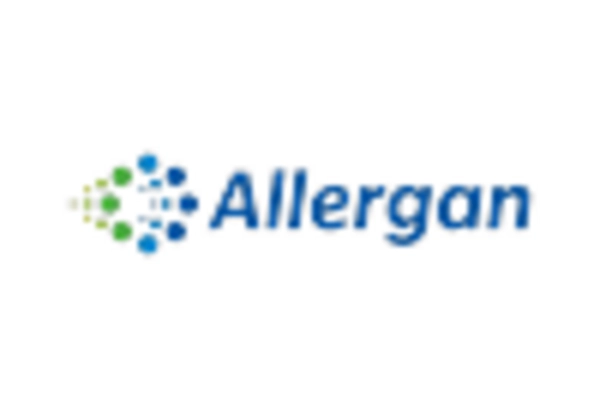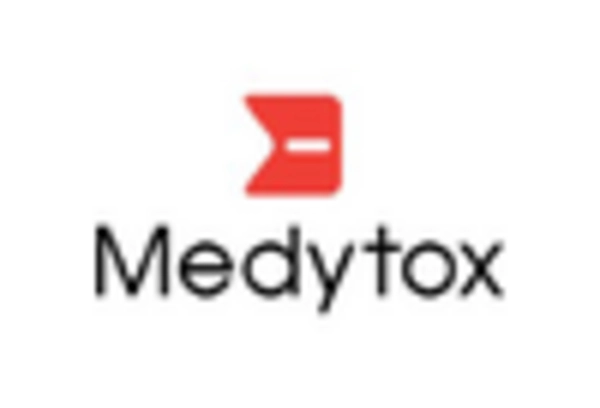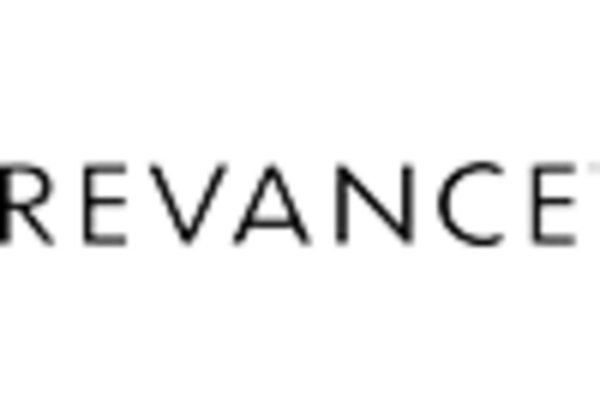Rising Disposable Income
The economic landscape in South America has shown signs of improvement, with rising disposable incomes among the middle and upper classes. This increase in financial capability allows consumers to invest in anti aging-services, which were previously considered luxury expenditures. Market data indicates that the beauty and wellness sector has experienced a growth rate of approximately 8% annually, reflecting a shift in consumer spending habits. As individuals prioritize self-care and aesthetic enhancements, the anti aging-services market is likely to benefit from this trend. Enhanced financial freedom enables consumers to explore a variety of services, from cosmetic procedures to holistic wellness treatments.
Advancements in Technology
Technological innovations play a crucial role in shaping the anti aging-services market in South America. The introduction of advanced treatment modalities, such as laser therapies and regenerative medicine, has expanded the range of available services. These technologies not only enhance the effectiveness of treatments but also improve safety and patient satisfaction. Market analysis suggests that the adoption of new technologies could lead to a 10% increase in service uptake among consumers. As practitioners incorporate cutting-edge techniques into their offerings, the anti aging-services market is likely to experience a surge in demand, driven by consumer awareness and the desire for effective solutions.
Increasing Aging Population
The demographic shift towards an older population in South America is a primary driver for the anti aging-services market. As life expectancy rises, the demand for services that address age-related concerns is likely to increase. According to recent statistics, individuals aged 60 and above are projected to constitute approximately 20% of the total population by 2030. This growing segment is increasingly seeking solutions to maintain their vitality and appearance, thereby propelling the anti aging-services market. The focus on maintaining a youthful appearance among older adults is expected to drive innovations in service offerings, including advanced skincare treatments and personalized wellness programs.
Cultural Shift Towards Youthfulness
In South America, there is a notable cultural emphasis on youthfulness and beauty, which significantly influences the anti aging-services market. Societal norms often equate youth with vitality and attractiveness, leading to increased consumer interest in services that promise to reverse or slow down the aging process. This cultural inclination is reflected in the growing popularity of aesthetic treatments, with a reported increase of 15% in demand for such services over the past few years. As more individuals seek to align with these societal ideals, the anti aging-services market is poised for continued growth, driven by a desire to maintain a youthful appearance.
Growing Awareness of Preventive Healthcare
There is a rising awareness of preventive healthcare among South American consumers, which is significantly impacting the anti aging-services market. Individuals are increasingly recognizing the importance of maintaining health and appearance as they age, leading to a proactive approach towards anti aging solutions. This trend is supported by a growing body of research highlighting the benefits of early intervention in age-related issues. As a result, the market for preventive anti aging services is expected to expand, with an estimated growth rate of 12% over the next five years. This shift towards preventive care is likely to reshape consumer preferences and drive demand for a variety of anti aging services.


















Leave a Comment